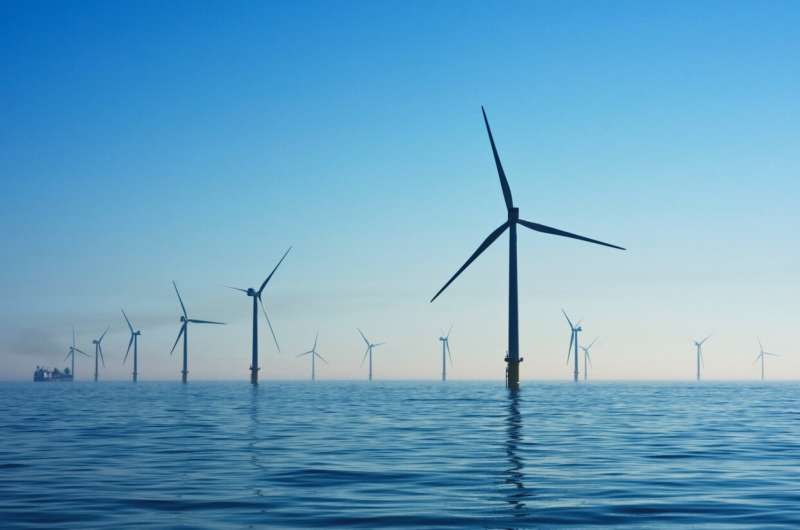The oceans, often referred to as the engines of life on Earth, are at the center of a significant dilemma. As of July 1, 2025, the urgent need to decarbonize our economy has led to a massive rollout of renewable energy, including offshore wind farms. However, this push for clean energy must be balanced with the imperative to protect marine biodiversity, a goal outlined in the 2022 Kunming-Montreal Global Biodiversity Framework, which calls for safeguarding at least 30% of the world’s oceans by 2030.
These seemingly conflicting objectives raise a critical question: Can we transition away from fossil fuels without further compromising our oceans’ already fragile ecosystems?
Marine Energy’s Vital Role
Renewable energy plays a crucial role in mitigating climate change by reducing fossil fuel emissions. Marine energy sources, particularly offshore wind, are increasingly important. The European Union (EU) has positioned offshore wind as a cornerstone of its decarbonization strategy. According to the European Green Deal and the Offshore Renewable Energy Strategy, offshore wind capacity is projected to expand from 29 gigawatts (GW) in 2019 to 300 GW by 2050.
This tenfold growth over three decades is essential for achieving climate neutrality by mid-century, while also driving innovation, employment, and energy security across Europe.
Protecting the Oceans: The ’30×30′ Initiative
The race for clean energy coincides with another global emergency: the biodiversity crisis. Human activities have altered 66% of the ocean surface, threatening its ecosystems. The Kunming-Montreal Global Biodiversity Framework aims to address this issue with its “30×30” target, which seeks to protect at least 30% of marine areas by 2030. Currently, less than 10% of the ocean is formally protected, making this an ambitious goal.
Creating marine protected areas is crucial not only for biodiversity but also for preserving vital ecosystem services like climate regulation, food supply, and carbon sequestration. Protecting biodiverse and carbon-rich ecosystems, such as Posidonia oceanica meadows, offers dual benefits for climate change mitigation and adaptation.
Conflicts and Challenges
The deployment of offshore renewables presents environmental impacts and conflicts, particularly in the Mediterranean Sea, home to over 17,000 species, 28% of which are endemic. This region already faces immense pressure from pollution, overfishing, tourism, and maritime traffic. The addition of energy infrastructures could exacerbate these issues, effectively industrializing many coastal and marine areas.
The primary conflict arises from competition for space, as areas with high energy potential often overlap with ecologically valuable regions. There are also direct impacts on marine fauna, including noise, collisions, and habitat alteration. The cumulative and long-term effects of these projects on ecosystems remain largely unknown, necessitating a cautious approach.
Currently, the Mediterranean hosts no permanent wind installations, with only one pilot project in France and several others in planning stages. In such a sensitive environment, careful planning is essential to ensure compatibility between climate and biodiversity goals.
Sustainable Coexistence
Despite the challenges, decarbonizing our economy and protecting the oceans are not inherently incompatible. The key lies in meticulous marine spatial planning (MSP). This process organizes sea uses—energy, fisheries, aquaculture, transport, tourism, and conservation—to identify high ecological value areas for protection and suitable zones for energy development.
By minimizing conflicts, MSP offers a roadmap for integrated and multifunctional sea management. The goal is a net positive impact, where renewable energy projects not only minimize damage but also enhance ecosystems through effective mitigation, compensation, and ecological restoration.
Collaboration among governments, industry, fisheries, scientists, and conservationists is vital. Local communities, including the fishing and tourism sectors, must be considered to ensure a just and equitable energy transition. Innovative solutions balancing renewable energy with biodiversity protection are essential.
Balancing Decarbonization and Conservation
Addressing the climate crisis and biodiversity loss in isolation would be a mistake, as they are two sides of the same coin. The decarbonization of our economy and the protection of marine biodiversity must coexist and reinforce each other. It is crucial that the expansion of marine renewables is approached with a holistic vision, prioritizing ecosystem health and integrating nature-based solutions from the outset.
We can, and must, harness the ocean’s immense energy potential without compromising its health and the well-being of local communities. The future requires a symbiosis between technological innovation and research into local ecological and socio-economic impacts. Integrating climate change mitigation with biodiversity conservation is key to creating sustainable marine energy.
This article is republished from The Conversation under a Creative Commons license. Read the original article.
 Southern Sky Offers Rare View of Two Exploding Stars
Southern Sky Offers Rare View of Two Exploding Stars Senate Approves Sweeping Domestic Policy Bill Amid Intense Debate
Senate Approves Sweeping Domestic Policy Bill Amid Intense Debate Former Congressman Warns Against USAID Cuts: A Gift to America’s Adversaries
Former Congressman Warns Against USAID Cuts: A Gift to America’s Adversaries Ancient Reefs Uncover Human Impact on Caribbean Marine Life
Ancient Reefs Uncover Human Impact on Caribbean Marine Life AI Breakthrough Targets Drug Resistance in Prostate Cancer Treatment
AI Breakthrough Targets Drug Resistance in Prostate Cancer Treatment